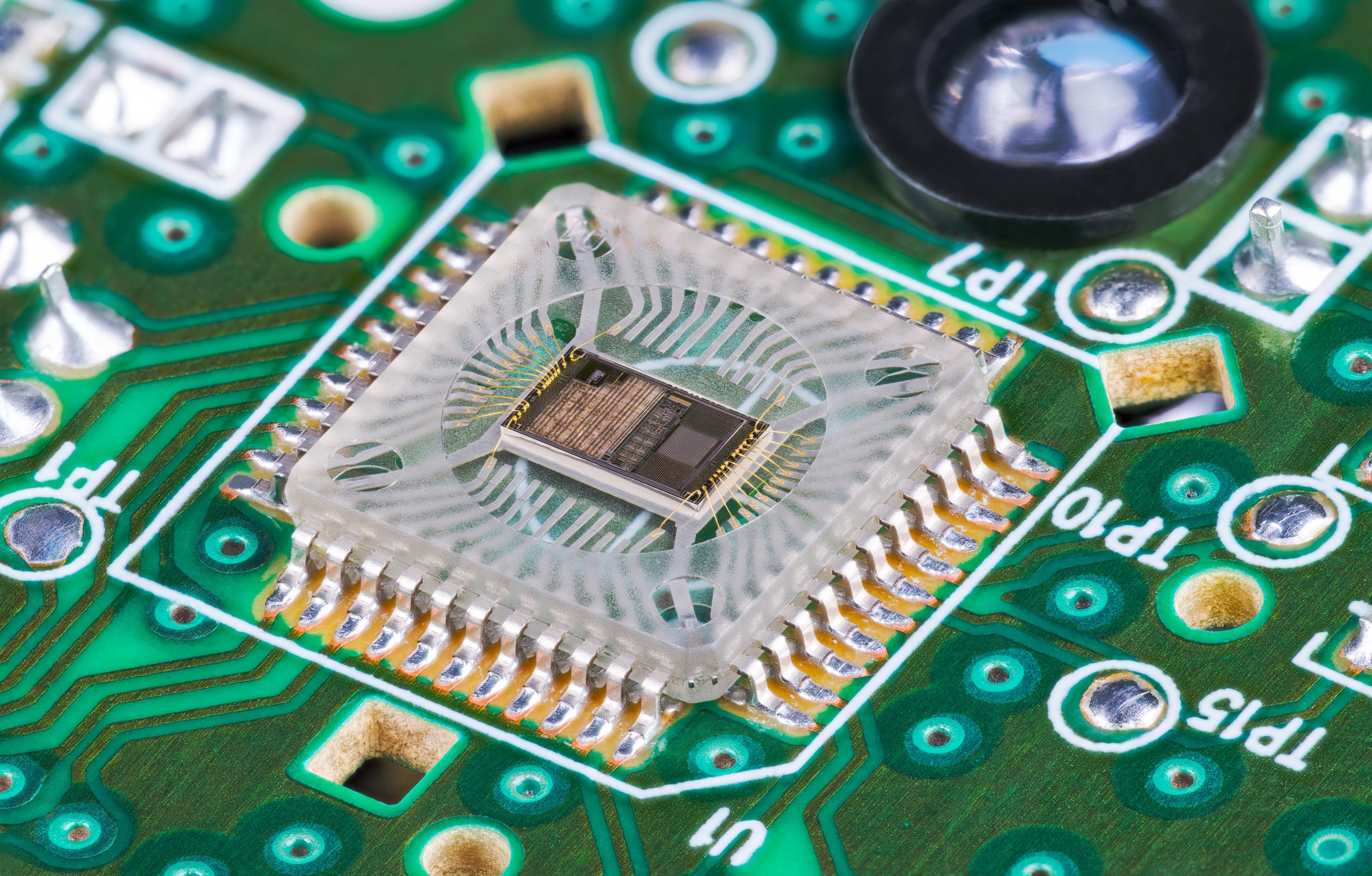Tin-based Narrow Bandgap Perovskites

Narrow bandgap (NBG) perovskites are a subclass of perovskite materials, and loosely refers to the ones with bandgaps <1.4 eV. Tin-based perovskites (containing iodide anion) are often have a narrow bandgap. Perovskites have the general chemical formula ABX3, where 'A' is typically an organic or inorganic cation (such as methylammonium or caesium), 'B' is a metal cation (such as lead or tin), and 'X' is a halide anion (such as iodide or bromide). Tuning the bandgaps of perovskites is possible via the adjustment of these components. The ease of bandgap tunability of perovskites makes them attractive for various applications in photovoltaics (PV), light emitting diodes (LEDs) and photodetectors (PDs). Furthermore, perovskites have other attractive features like:
- Potential for low-cost scalable production
- High absorption coefficients
- Remarkable defect tolerance
- Light weight and flexible
These NBG perovskites hold significant promise for the next-generation PV, LEDs and PDs. And these are mostly used in PV research, specifically in perovskite tandem solar cell research.
Fundamentals of Narrow Bandgap
Narrow bandgap (NBG) perovskites, featuring a <1.4 eV bandgap, absorb all photon energies above 1.4 eV. This gives them a wider access to the solar spectrum, which means a greater short-circuit current density (JSC) in solar cells. In other words, we can say that JSC increases as bandgap narrows.
However, a very low bandgap value reduces the open-circuit voltage (VOC) of solar cells. There is a positive correlation in this case where VOC scales with the bandgap value. Moving too away from the optimum bandgap value of 1.4 eV implies poor efficiencies. Hence, based on the applications, the optimisation of perovskite's bandgap value is done.
The feature of NBG perovskites to absorb a wider range of photon energies makes them nearly opaque to the visible light. They only transmit part of the IR light of the incoming sunlight based on their bandgap. Hence, it is not possible to make transparent optoelectronics with them.
As single junction solar cells, NBG perovskites can achieve maximum possible efficiencies in the range of 5 - 33% based on their bandgap. For example, for a bandgap value of 1.22 eV, the theoretical efficiency limit is about 33%. This is impressive considering that the theoretically possible maximum efficiency for a single junction is 33.7% (at 1.34 eV).
Examples of Tin-based Narrow Bandgap Perovskites
The atomic radius of tin (Sn) is smaller than that of lead (Pb) therefore it could assumed it would have a larger bandgap. However, Sn-based perovskites feature lower bandgaps than Pb-based perovskites. This is because of tin's less stabilized s orbitals that hybridize more effectively with halide p orbitals, raising the valence band maximum. The difference in electronic structure of the atoms plays a larger role in determining the bandgap. As well as this, iodide perovskites are lower in bandgap to those of bromide perovskites. Hence Br- is avoided, and I- is used in the narrow bandgap perovskites.
The following examples of tin-based perovskites show narrow bandgaps:
Tin-based Iodide Perovskites: MA, FA, Cs or their mixtures in the A-site of the ASnI3 perovskites feature lower bandgaps in the range of 1.24-1.4 eV.
Mixed Tin-Lead Iodide Perovskites: Pb is mixed in Sn-based perovskites to lower the operational instability of devices caused by Sn. When mixing Sn and Pb in perovskites like ASnxPb1-xI3 or (FASnI3)x(MAPbI3)1-x, the resulting properties, including the bandgap, can be significantly influenced by the ratio and interaction of these two elements. Furthermore, in case of solar cells, mixing Pb to Sn-based perovskites not only improves operational stability but also efficiency.
Cu2+-doped Cs2SbAgCl6 and Mn2+-doped Cs2AgInCl6 are some examples of doped double perovskites (not tin based) which can reach up to 1 eV bandgap.
Applications of Narrow Bandgap Perovskites
Photovoltaics
Narrow bandgap (NBG) perovskites are typically used and being developed for all-perovskite tandem and triple-junction solar cells. In tandem and multijunction solar cells, solar cells with different bandgaps are stacked to increase the amount of light absorbed by the cell. Any light that is transmitted through the top sub-cell, will then be absorbed by the bottom sub-cell. As these solar cells have different band gaps, between them they absorb different parts of the solar spectrum. This increases the absorbance (due to a wider spectral coverage) and therefore efficiency of the solar cell. These NBG perovskites serves as the bottom sub-cell’s photo-absorber material. Mixed Sn-Pb perovskites are particularly attractive for their 1.22 eV bandgap (high VOC~0.9 V, high efficiency~25%) and relatively better operational stability.
Light Emitting Diodes

NBG perovskites can be used to fabricate LEDs that emit in the near-infrared (NIR) region. These LEDs are useful in applications such as night-vision systems, medical diagnostics (e.g., phototherapy), and communication devices that use infrared light. The emission wavelength of perovskite LEDs can be finely tuned by adjusting the composition, allowing for the development of LEDs with specific emission characteristics tailored to various applications.
Photodetectors
NBG perovskites are particularly suitable for photodetectors that need to be sensitive to NIR light, making them ideal for applications in telecommunications, remote sensing, and night-vision technologies. Perovskite photodetectors can exhibit high responsivity and fast response times, which are crucial for applications requiring precise and rapid detection of light signals. By combining NBG perovskites with other materials, multispectral imaging systems can be developed. These systems can capture images across different wavelengths, improving the quality and detail of the images, which is valuable in fields like medical imaging and environmental monitoring.
Challenges for Narrow Bandgap Perovskites
The major challenge for narrow bandgap perovskites, in fact for perovskites in general is their operational stability. Sn-based iodide perovskites face the issue of instability to stressors such as:
- Temperature
- Oxygen
- Moisture
Sn(II) oxidises to Sn(IV) in the presence of such stressors and it consequently induces ion migration phenomenon. This not only brings down the stability but also the efficiency of the device.
Mixed Sn-Pb perovskites are resistant to these phenomena to a certain extent. And hence, for the applications listed above, the ongoing research uses them in devices. However, they still face the stability problem and current research focuses on mitigating them by interface engineering (like surface treatments, defect passivation, interlayers, 2D capping).
Double perovskites often require intricate synthesis methods compared to conventional single-component perovskites. Synthesizing these materials can lead to issues achieving high-quality and uniform crystals, affecting device performance. Variations in composition and crystal structure can lead to unpredictable changes in bandgap energy, affecting device performance and efficiency. Efficient charge carrier transport is crucial for optoelectronic devices. But double perovskites may suffer from limited charge mobility or carrier recombination rates. Poor carrier transport properties can lead to decreased device performance and lower overall efficiency.
Conclusion
In conclusion, tin-based narrow bandgap (NBG) perovskites offer promising advancements in photovoltaics, LEDs, and photodetectors due to their ability to absorb a broader spectrum of light and their tuneable bandgaps. Despite their potential, the primary challenge remains their operational stability, particularly in tin-based perovskites. Ongoing research focused on improving stability and performance through interface engineering is crucial. As these issues are resolved, NBG perovskites are set to play a significant role in enhancing the efficiency and cost-effectiveness of optoelectronic devices.
Perovskite Materials

Learn More
 Tandem Solar Cell
Tandem Solar Cell
A tandem solar cell is a subtype of multijunction solar cells. They are crucial in photovoltaics (PV) research and industry. These cells can convert a broader range of solar spectra into electricity.
Read more... Wide Bandgap Perovskites
Wide Bandgap Perovskites
Wide bandgap (WBG) perovskites are a subset of perovskite semiconductor materials. These perovskite materials are characterized by a bandgap energy (Eg) >1.7 eV. WBG perovskites have several attractive properties for various optoelectronic applications.
Read more...
References
- Tin halide perovskites: From fundamental properties to solar..., Pitaro et al, Advanced Materials (2021)
- Narrow bandgap metal halide perovskites for all-perovskite tandem..., Hu et al, Chemical Reviews (2024)
- Cu(II)-doped Cs2Sbagcl6 double perovskite: A lead-free, low-bandgap material, Karmakar et al, Chemistry of Materials (2018)
- Solution processed MN2+ doped CS2AGINCL6 lead free double..., Jeevaraj et al, Physica B: Condensed Matter (2023)
- Tunable Near-Infrared Luminescence in Tin Halide Perovskites Devices, Lai, M. L. et al, Journal of Physical Chemistry Letters (2016)
Further Reading
- The Physics of Solar Cells, Nelson J., J. (2003)
- Tin halide perovskites: From fundamental properties to solar cells., Pitaro, M. et al., Advanced Materials (2021)
- Narrow bandgap metal halide perovskites for all-perovskite tandem photovoltaics., Hu, S. et al., Chemical Reviews (2024)